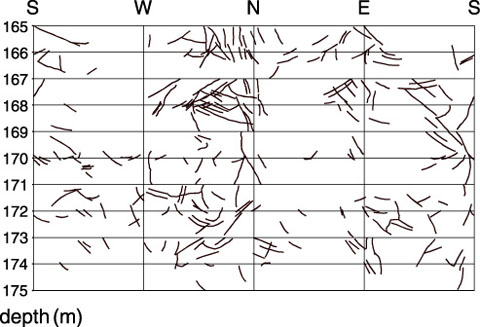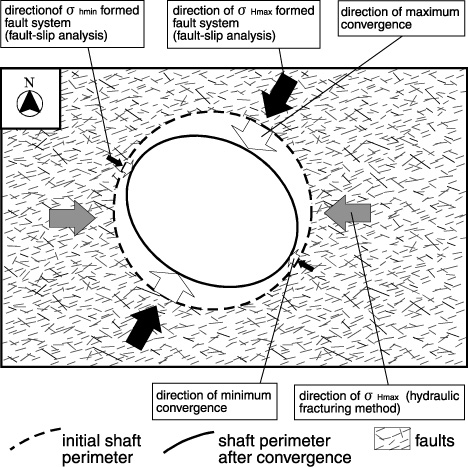
Fig.2-19 Development view acquired through fault observation in the shaft

Fig.2-20 Conceptual diagram showing shaft convergence and stress
An understanding of rock mass behavior during shaft excavation is important for the development and improvement of technology and engineering techniques related to the construction of deep underground facilities such as those for radioactive waste disposal.
This paper focuses on the stress field that produced a fault system in the Horonobe area of Japan, considering the relationship between the fault system and the rock mass response to shaft excavation in soft sedimentary rocks. A general consensus on underground excavation through soft rocks is that the role of discontinuities such as faults is far less important than that of the present rock stress. However, hydraulic-fracturing-based investigations in boreholes and studies of tectonic plate movements in the Horonobe area indicate that the influence of the fault system on the rock mass response to shaft excavation is not negligible; the reason for the influence is that the greatest convergence in the shaft during excavation was found to be oriented NNE-SSW, while the present major horizontal principal stress is oriented E-W (Fig.2-19).
We performed a fault-slip analysis of faults observed on the shaft wall and reconstructed the paleostress field that produced the fault system. When the faults were produced, the maximum horizontal principal stress was oriented mainly NNE-SSW and the minimum horizontal principal stress was oriented mainly WNW-ESE. These directions were close to the directions of the maximum and minimum convergences in the shaft, respectively (Fig.2-20). The result of this study shows that the rock mass deformation resulting from underground excavation is probably controlled by the fault system in the target area. It also suggests that the assessment and prediction of rock mass behavior on the basis of paleostress fields responsible for fault systems are possible.